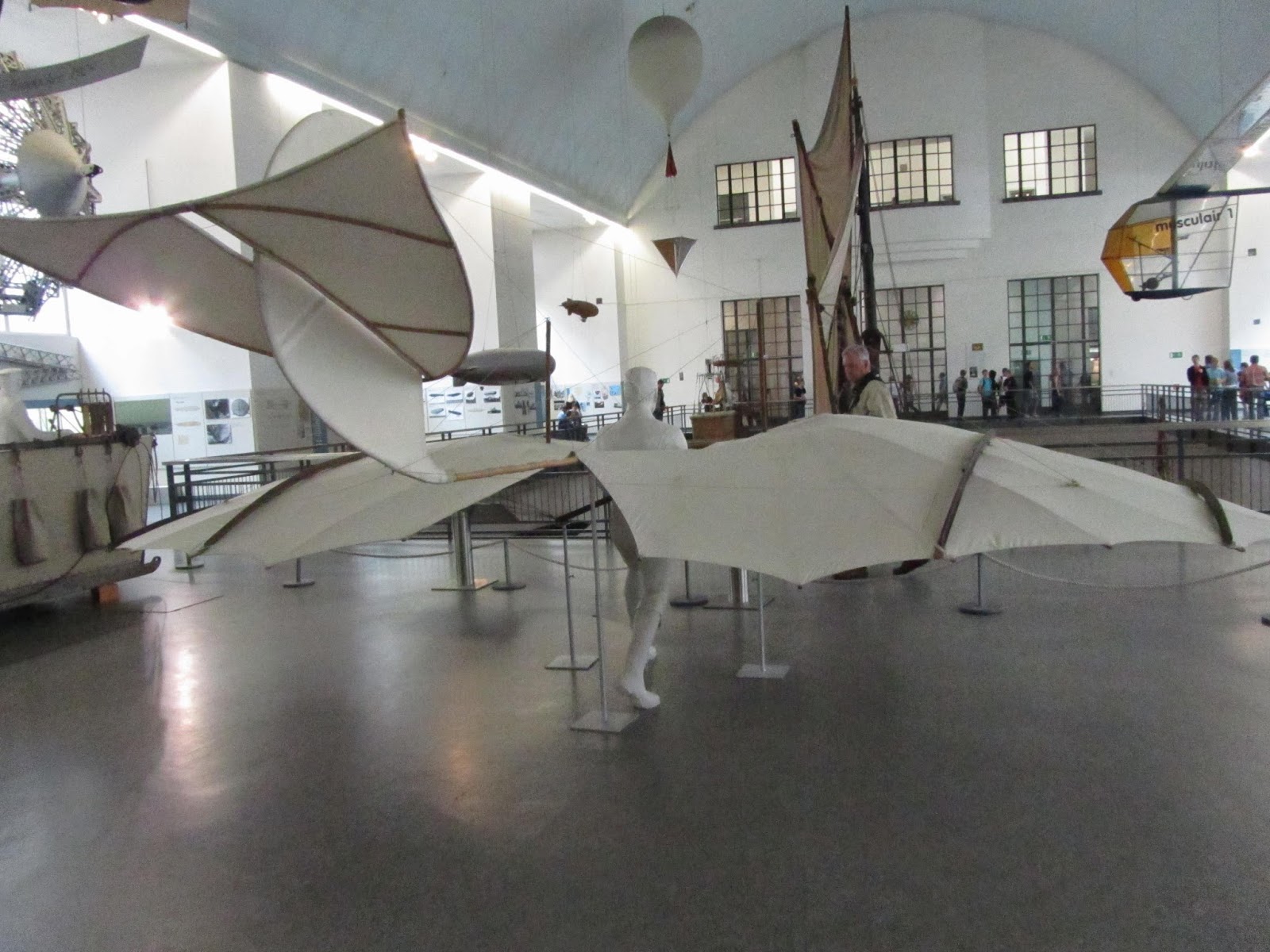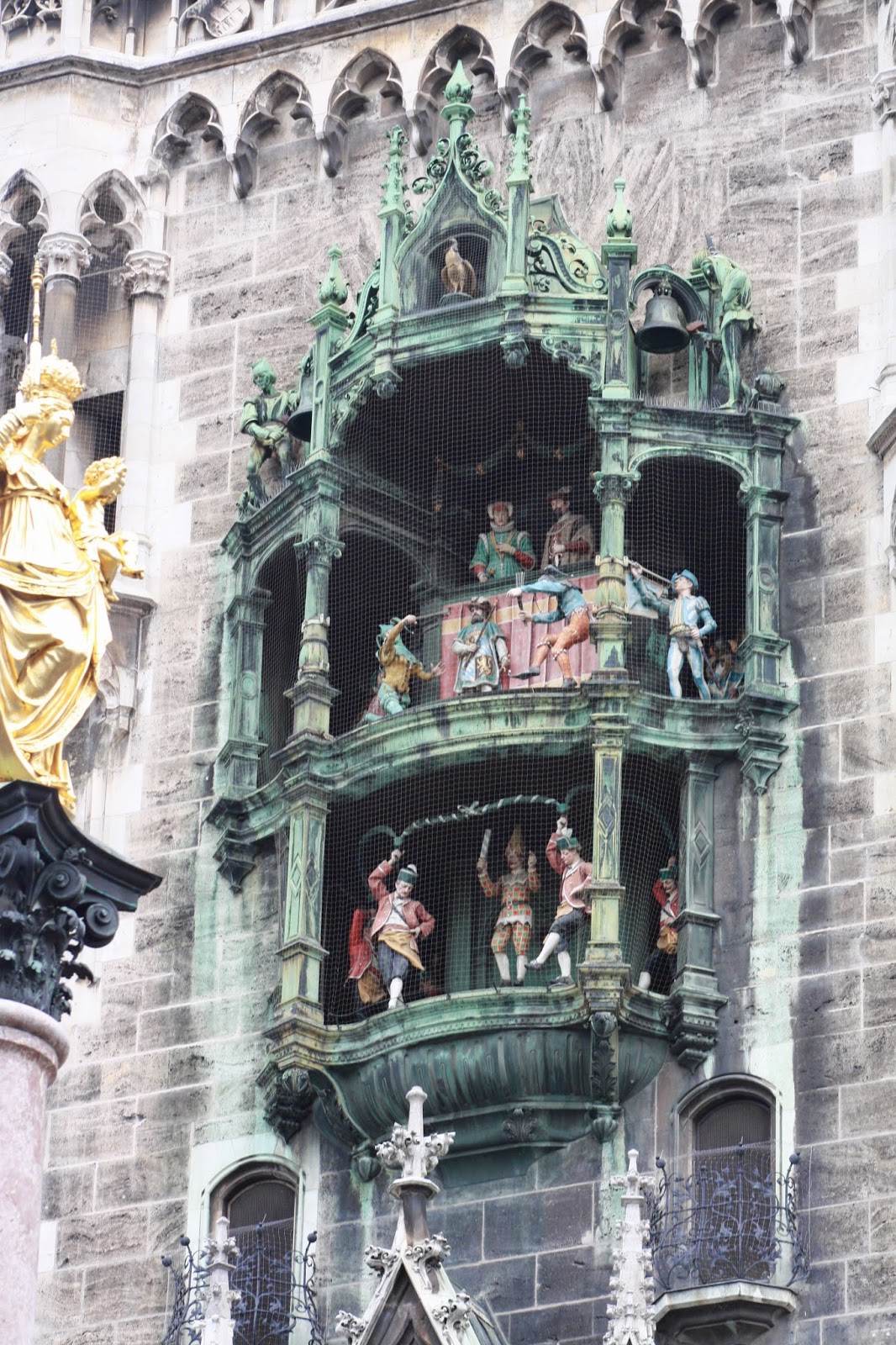 |
| Beer Garden at the Chinese Tour in the Englischer Garten |
After quickly dropping off luggage in our room mid-afternoon, we headed off by taxi to the Deutsches Museum, passing by and snapping a quick photo of the Ishator Gate en route. Like much of Germany, at the time, the 14th-century entrance to the old city was under some kind of restoration when we drove by. The Deutsches Museum, opened until five everyday, is the largest scitech museum in the world. As an airplane enthusiast I was eager to see the early German aircraft. The German engineer Otto Lilienthal was the first man to launch himself into the air, fly, and land safely. He also was an important source of inspiration and information for the Wright brothers in the next decade. He built his first glider in 1891. the one pictured below was built in 1895.
Early the next morning we headed out to the Alte Pinakothek, one of the oldest art museums in the world with one of the largest collections of old masters. Beforehand we stopped for breakfast at a near by cafe housed in a building from 1900, Tresznjewski, and were overwhelmed with the abundance of both intriguing and good food.
The Alte Pinakothek, is one of three Pinakotheks in the museum area -- the Alte focuses on old masters, while the Neue (New) Pinakothek covers the 19th century and Pinakothek der Moderne exhibits modern art. The collection is so staggering that its difficult to grasp it all in one visit including major works by Ruebens (one that is so large a gallery was designed specifically for it), Rembrandt, Goya, El Greco, Fragonard, Bouchard, Da Vinci....
 |
| Leonardo Da Vinci's "Virgin and Child" |
Then it was off to the must-do Hofbrauhaus, the world's most famous beer hall founded in 1589 for a Duke, for lots of big beers, German music and more wurst, pretzels and potatoes than we needed.
After a stroll through Dallmayr's, the luxury food store dating back to the 17th century, just to browse, we called it a day.
On our last morning in Munich, we made our way to the monumental site known as the Residenz. a complex of 112 rooms parts dating back to the 15th century, which served as the seat of government and residence of the Bavarian dukes, electors and kings from 1508 to 1918. The primary focus of our time there though was to see what is thought to be one of the finest representations of Rococo architecture in the world, the Cuvillies Theatre. Originally in the space where the new national theatre stands, the major pieces of the original Cuvillies were preserved during WW II by literally dismantling them for safety in 1943. The theatre was then in 1956 reassembled in a new building near theApothekenhof (Apothecary Court) in the Residenz. The Cuvilliés-Theater – also known as the Altes Residenz-Theater, now reached from the Brunnenhof (Fountain Court), was a bit tricky to find, but the search was well worth the treasure found at the end of it - a Gesamtkunstwerk, as it is called, a totally comprehensive piece of art in its own right.. And while we were visiting we were privileged to hear a mini-concert, by the pianist rehearsing for a sold-out concert that evening.
Certainly, Munich is a place to linger and explore longer.














